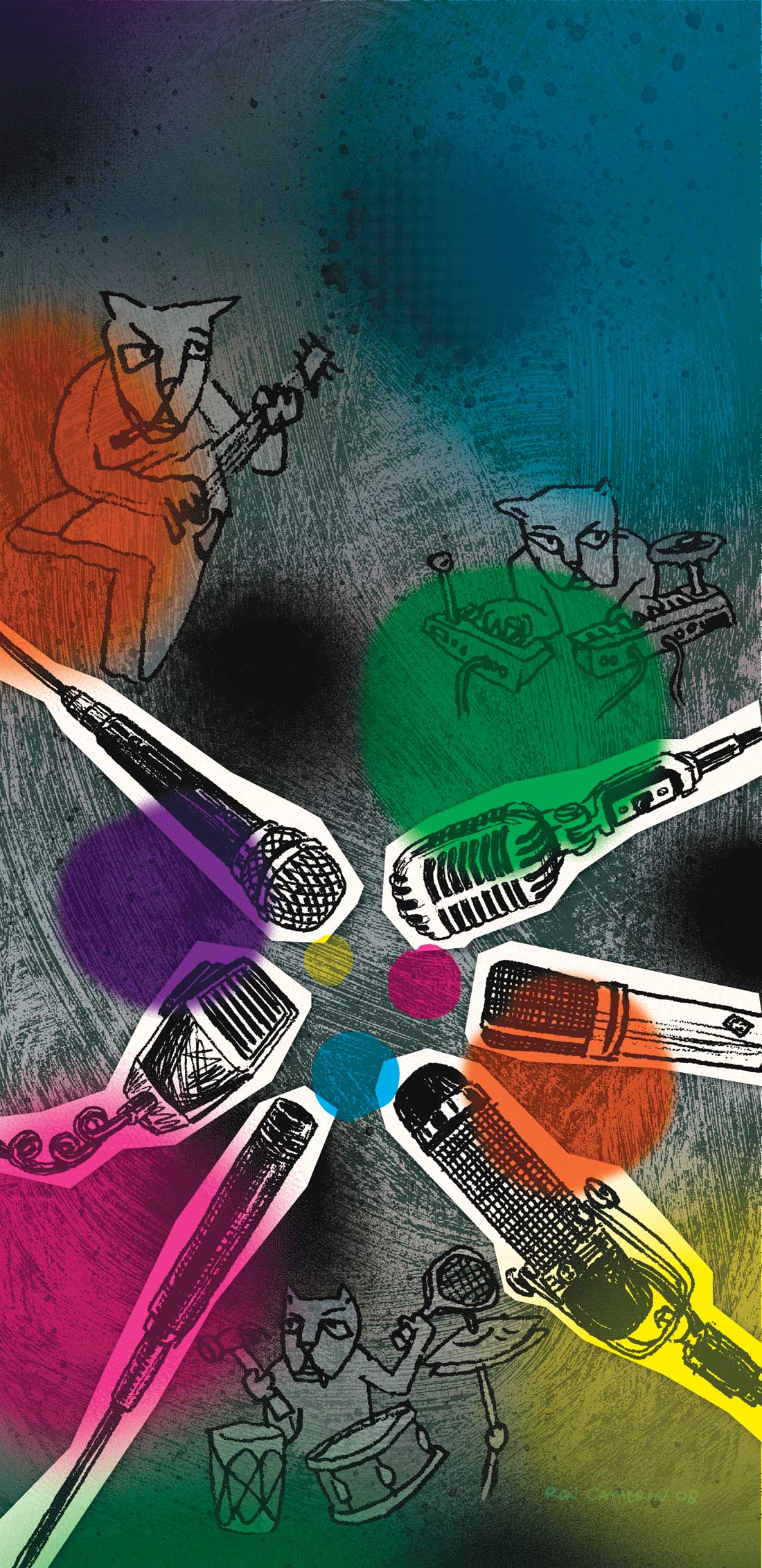A few years ago, we lucked upon an old Neumann U 87. Cosmetically, it was pretty beat up, so it was only $1200. After testing it, we were exceptionally pleased with its sound. I supplied Neumann with the serial number in an effort to determine the mic's age. They certified that it was from the first year the U 87 was made! Needless to say, this mic is a lesser member of the "irreplaceable club". If something happens to it, I can't easily purchase an exact replacement. So would someone tell me why many of us plug a vintage mic into a $2000 pre amp, a $2,000 compressor, using $50 XLR cables-only to hang the mic on a $35 guitar-store mic stand? This thought came to me when I watched our Korby KAT hit the deck during a session. Our floor is industrial carpet over concrete, so you can guess who won. After calming down, I picked up the phone and called Latch Lake to request some help.
The Latch Lake micKing 2200 is a smaller version of the company's flagship 3300. It has a slightly smaller base and fewer sections on the boom and main shaft. But I don't need to mic 30 ft in the air, and the reduced cost makes it easier on the pocket. The base is the best of both worlds, featuring wheels that can't move the unit unless the engineer tilts the stand (kind of like a moving dolly). Anyone who uses wheel-equipped stands can testify how often they are bumped, shoved, or slid out of place. Conversely, a stationary stand in the same league as the 2200 is a monster to move without blowing out your lower back. No thanks.
But there are more features in the design. The base can nest with other micKing stands and are perimeter-weighted for added maximum stability. Since the middle of the base is off the floor, cables can be routed underneath without a problem. The main mast ends in a 5" piece of solid, hardened steel that connects to the base. It has a tapered point and fits through the base and is secured by a separate nut. Compare this design to other heavy-duty stands that attach the mast to the base via four or five rows of threads. One accidental trip or falling speaker is all it takes to strip the threads and ruin the stand. Anyone who has ice-skated can testify how hard it can be on your ankles. If this mast-to-base joint is the "ankle" of a mic stand, then the Latch Lakes are built like Olympic hockey players!
Instead of using threads, locking pressure-levers control telescoping sections of the stand. They remind me of better versions of a design Tama used on drum stands. I've been abusing some of those Tama stands for 20+ years, so I'm convinced Latch Lakes are built for multiple lifetimes (not just a lifetime's) of use. The boom clutch, often the weakest link, is a continuously-adjustable, no-teeth system. It's strong enough to allow you to set it to 90 degrees and do a pull-up on it. (Actually, the pull-up demo tests the clutch on the mast, not the boom clutch-assuming anyone on the Tape Op staff could do a pull up.) The counterweight is a large chrome weight that can be adjusted or removed according to mic weight. As someone who's been nearly knocked out by walking into the weights on other stands, it's hard to miss this guy. (Somewhere Mike Fisher laughs.) My favorite part of the stand is the mini boom/mic adapter part. It rotates and tilts in any direction. This is a godsend when trying to mount a fixed-thread mic like a Blue Bottle or Shure 315-keep the mic still and spin the stand's adapter!
I don't want to come off like I've never used a professional stand. We have four vintage Starbirds here in the studio. They're great for "drag and droop" mic placement. You drag the stand to its location, and let the mic droop from the ceiling. Don't try to place a mic a certain way, the Starbirds weren't designed for that. But the Latch Lakes will do whatever you configure them to. We also have some vintage Atlas stands. Again, they're better at drooping, and rolling them is a mess, and their threaded controls ceased to work smoothly around the time of the Reagan Administration. The Latch Lake 2200 has become a mainstay of our studio life. Despite receiving review units of top notch stands from several major companies, no other stand system has the build quality, reliability, flexibility, and projected lifespan of the Latch Lake. Worse, many of the competitors' offerings cost almost as much or more than the 2200. Combined with the Xtra Boom and Jam Nuts, the Latch Lake 2200 really is the best thing in stands since sliced bread.
If you are at all skeptical, I challenge you to call a Latch Lake dealer and try one for 30 days. There is no way you'll send this guy back. And you'll begin to detest those inexpensive stands; they were never designed for holding your prized recording mics anyway! In life, there are some things you don't do. You don't carry a pre-war Martin in a paper bag, you don't step on Superman's cape, and you don't mount your prized vocal mic on a "prosumer" stand. ($450 MSRP; www.latchlakemusic.com)
Tape Op is a bi-monthly magazine devoted to the art of record making.




_disp_horizontal_bw.jpg)